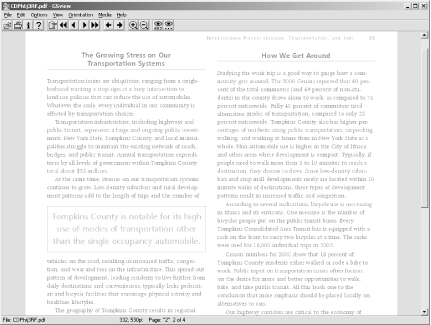Hack 3 Read PDFs with Ghostscript's GSview
![]()
![]()
The Ghostscript toolkit for working with PostScript and PDF supports a number of simple viewers, including GSview.
The Ghostscript set of tools (http://www.cs.wisc.edu/~ghost/) is an alternative to a number of Adobe products. At its heart is a PostScript processor, which also works on PDF files.
|
Although typically you run Ghostscript from the command line or you integrate it with other processes, you can also use it as the rendering engine inside a number of viewers. Ghostview and GV support Unix and VMS, while MacGSview is a viewer for the Macintosh and GSview supports Windows, OS/2, and Linux. You'll need to install Ghostscript [Hack #39] before you install GSview. Once GSview is installed, it can open PostScript, Encapsulated PostScript (EPS), and, of course, PDF, as shown in Figure 1-4.
Figure 1-4. Viewing a PDF document through GSview

GSview doesn't provide a lot of bells and whistles. The toolbar across the top offers basic navigation, zoom, and search (the eyes). If you explore the menus, however, you'll find lots of PostScript-oriented utility functions. GSView is a useful tool if you need to work with PostScript and EPS files generally, because it lets you explore these files just as if they were PDFs. GSView is also a useful tool if you have a file that's misbehaving, because it provides a fair amount of detail about errors in PostScript and PDF handling. For many users, it's too stripped down to be useful, but what it lacks in chrome it has in power.







